
Native American History
Upcoming Events

Oklahoma History Symposium
The Oklahoma History Symposium will be held on Saturday, May 3, at the Oklahoma History Center. This year’s theme is “Oklahoma in Context.” Presented by the Oklahoma Historical Society, this one-day event encompasses a range of historical topics. Award-winning filmmaker Loren Waters (Cherokee/Kiowa) will be our keynote speaker. Waters will share about her short documentary Meet Me at the Creek, which focuses on Rebecca Jim’s (Cherokee) efforts to restore Tar Creek in Miami, Oklahoma. Find out more about this free event.
The Encyclopedia of Oklahoma History and Culture
Discover Oklahoma’s Native history, culture, stories, and people in our online encyclopedia.
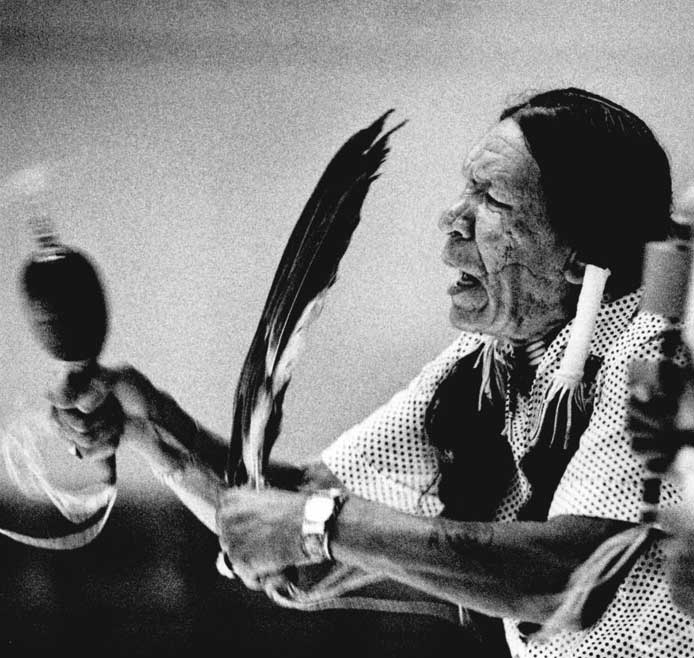
Saginaw Grant
Actors and Performers
Ataloa (Mary Stone McLendon)
Yvonne Chouteau
Alvin Burke Deer
George Weidlen Deer Jr.
Saginaw Grant
Clu Gulager
Rosella Hightower
Moscelyne Larkin
Will Rogers
Will Sampson
Wes Studi
Maria Tallchief
Marjorie Tallchief
Te Ata
Athletes
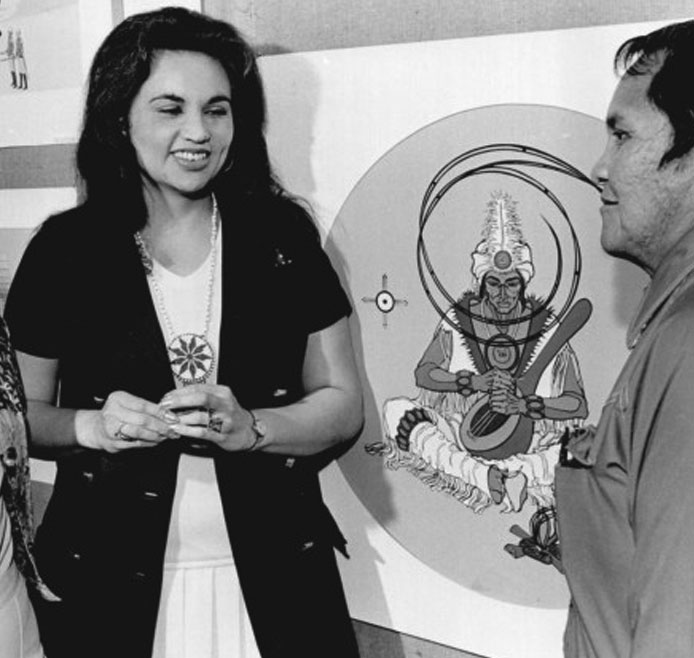
Joan Hill
Artists
Spencer Asah
James Auchiah
Woodrow Wilson “Woody” Big Bow
Acee Blue Eagle
Blackbear Bosin
T. C. Cannon
Woodrow Wilson “Woody” Crumbo
Joan Hill
Jack Hokeah
Allan Houser (Haozous)
Vanessa Jennings
Ruthe Blalock Jones
Steven Mopope
Lois Smoky
Ernest Spybuck
Willard Stone
Carl Sweezy
Jerome Tiger
Monroe Tsatoke
Dick West Sr.
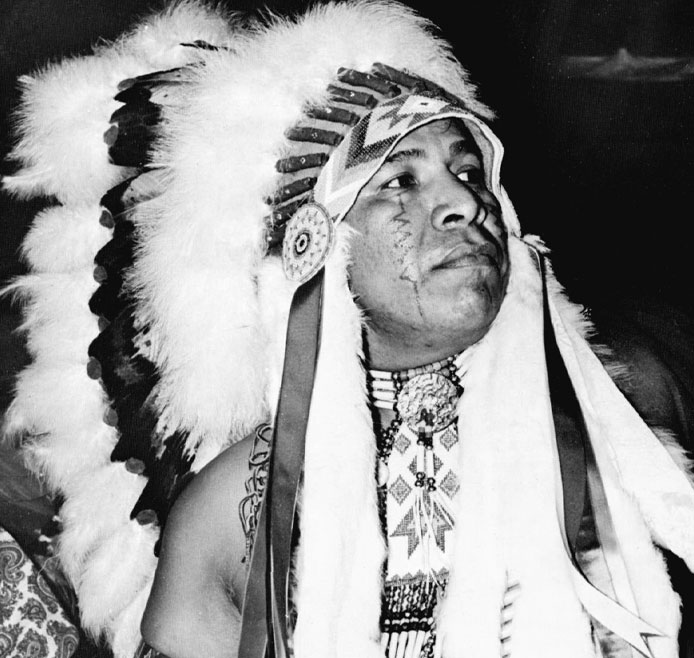
Doc Tate Nevaquaya
Musicians
Louis Wayne Ballard
Jesse Ed Davis III
Tessie Mobley
Doc Tate Nevaquaya
Writers and Historians
Ruth Margaret Muskrat Bronson
Czarina Conlan
Rachel Caroline Eaton
Joy Harjo
John Joseph Mathews
Navarre Scott Momaday
Narcissa Owen
Alexander Posey
Carter Revard
John Ridge
John Rollin Ridge
Lynn Riggs
Will Rogers
Emmet Starr

Native Culture
Architecture
Art
Basketry
Beadwork
Dance
The Daughter of Dawn
Games
Ghost Dance
Medicine
Military Societies
Music
Native American Church
Oral Tradition
Pottery
Ranching
Sofkey
Sun Dance
Traditional Arts
Trail of Tears (pageant)
Wild Onion Dinners
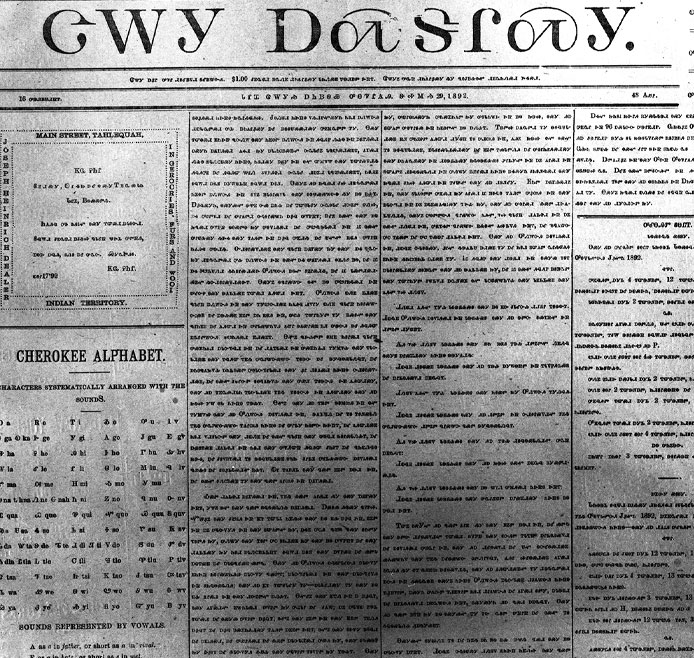
Cherokee Advocate
Historic Publications
Cherokee Advocate
Cherokee Phoenix
Indian Journal
Twin Territories: The Indian Magazine
More Topics
American Indians
American Indians and Christianity
American Indians and Education
American Indian Exposition
American Indian Federation
American Indian Movement
Discover more topics in The Encyclopedia of Oklahoma History and Culture.
Researching Native History
Explore the Archives
Find photographs, newspapers, manuscripts, oral histories, film, maps, and so much more.
The Gateway to Oklahoma History - view collections online
Digitized Newspapers
Search and read over 5,000 issues of Native American newspapers on The Gateway to Oklahoma History including the Daily Chieftain, the Cherokee Advocate, the Tahlequah Arrow, the Indian Advocate, and others.
Start exploring now.
Manuscript Guides
View our PDF guides listing collections in the Manuscript Archives by topic.
The Chronicles of Oklahoma
Access more than 380 issues of the Oklahoma Historical Society’s scholarly journal on The Gateway to Oklahoma History.
Oral Histories
Listen to oral histories with, and about, influential Native Americans.
Audio Archives on YouTube
Voices of Oklahoma website
Archival Footage
Many videos from the OHS archives are available on YouTube.
Film and Video Archives on YouTube
A Very OK Podcast
Discover Native stories in our monthly podcast.
“Battle of Honey Springs,” October 2021
“Battle of the Washita,” January 2022
“The Five Moons,” March 2024
“Indigenous Rock Star Jesse Ed Davis,” December 2024
“Two Worldviews in Conflict,” December 2023
“What is Spiro?,” April 2021
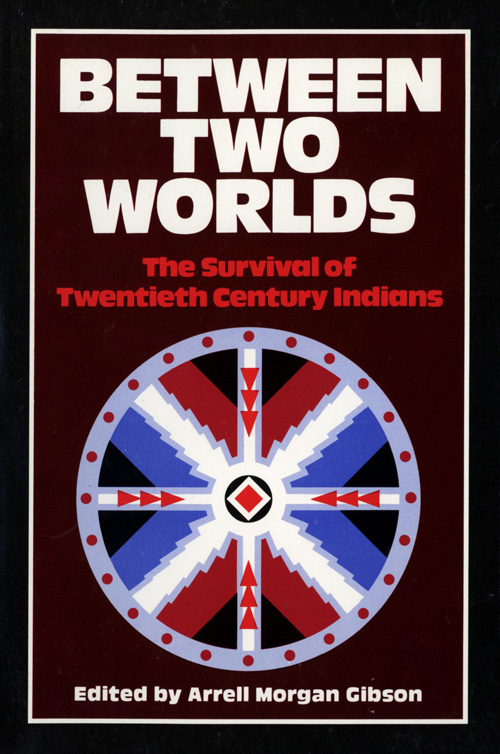 Between Two Worlds: The Survival of Twentieth Century Indians, Arrell Morgan Gibson, ed.
Between Two Worlds: The Survival of Twentieth Century Indians, Arrell Morgan Gibson, ed.Read online | Epub
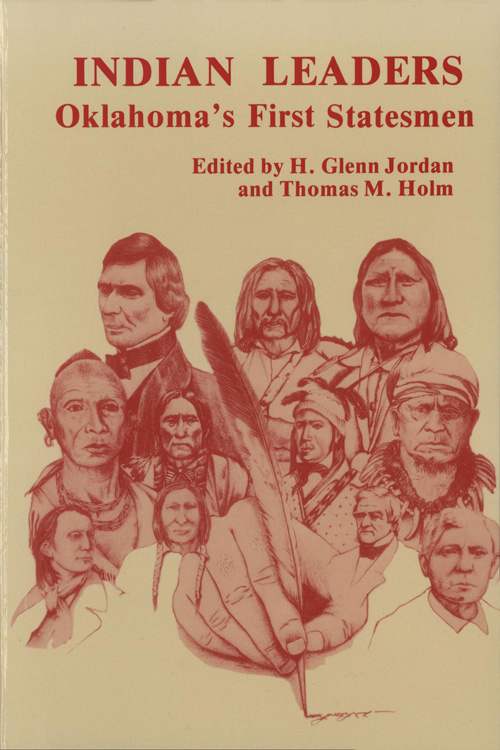 Indian Leaders: Oklahoma’s First Statesmen, H. Glenn Jordan and Thomas M. Holm, eds.
Indian Leaders: Oklahoma’s First Statesmen, H. Glenn Jordan and Thomas M. Holm, eds.Read online | Epub
Explore Historic Places
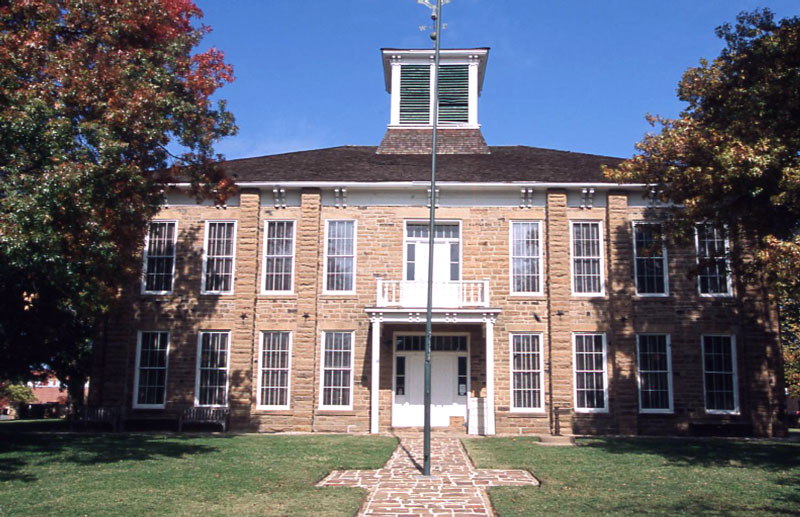
The Creek Council House in Okmulgee is a National Historic Landmark
National Historic Landmarks
Many of Oklahoma’s National Historic Landmarks have a connection to Native Americans. Oklahoma’s landmarks include archaeological sites, forts and battlefields, the capitols of Native nations, and the cabin owned by Sequoyah, creator of the Cherokee syllabary.
Learn more in The Encyclopedia of Oklahoma History and Culture.
The National Register of Historic Places
Listing in the National Register of Historic Places is an honorific designation that provides recognition, limited protection, and, in some cases, financial incentives for these important properties. The State Historic Preservation Office identifies, evaluates, and nominates properties for this special designation.
- American Baptist Home Mission House, Tahlequah
- Anadarko Downtown Historic District, Anadarko
- Bacone College Historic District, Muskogee
- Benjamin Franklin Smallwood House, Lehigh vicinity
- Cherokee National Cemetery, Fort Gibson vicinity
- Cherokee Supreme Court Building, Tahlequah
- Chickasaw National Capitols, Tishomingo
- Chief’s House, Swink vicinity
- Chilocco Indian Agricultural School, Newkirk vicinity
- City Hall (Osage Council House), Pawhuska
- Comanche Indian Mission Cemetery, Fort Sill
- Confederated Peoria Indian Thematic Resources, Miami vicinity
- Cupco Church, Yanush vicinity
- Creek Council Tree Site, Tulsa
- Creek National Capitol, Okmulgee (National Historic Landmark)
- Edwards-Hardaway Homestead and Cemetery, Red Oak
- Green McCurtain House, Kinta vicinity
- Honey Springs Battlefield, Rentiesville vicinity (National Historic Landmark)
- Hominy Osage Round House, Hominy
- Illinois Campground, Tahlequah
- Isaac Billy Homestead and Family Cemetery, Daisy vicinity
- Joe Ralls House, Atoka
- Joseph M. Thompson House, Tahlequah
- Lewis Ross-Cherokee Orphan Asylum Springhouse, Salina
- Mardock Mission, Stella vicinity
- Medicine Bluffs, Fort Sill
- Moses Keokuk House, Stroud vicinity
- Murrell Home (Hunter’s Home), Tahlequah (National Historic Landmark)
- Nine Tribes Tower, Miami
- Pawnee Agency & Boarding School Historic District, Pawnee
- Peter Conser House, Hodgen vicinity
- Quanah Parker Star House, Cache vicinity
- Reverend Jess Bushyhead Grave, Westville vicinity
- Seminole Whipping Tree, Wewoka
- Sequoyah’s Cabin, Akins vicinity (National Historic Landmark)
- Spirit of the American Doughboy Statue, Muskogee
- Splitlog Church (Cayuga Mission Church), Grove vicinity
- Union Agency, Muskogee
- Wheelock Academy, Millerton vicinity (National Historic Landmark)
- White Eagle Park, White Eagle vicinity
- White House of the Chickasaws (Governor Douglas H. Johnston House), Emet vicinity
- Young Cemetery, Ardmore vicinity
Historical Markers
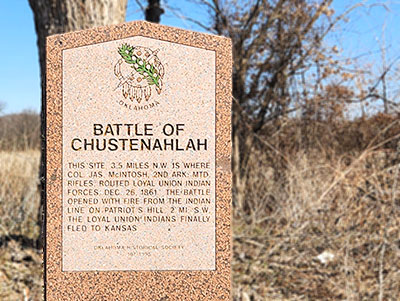
Our database lists hundreds of markers located across the state, including more than 200 related to Native peoples, events, and places. Search by marker name, topic, or county.
Browse markers related to Native American history.
Resources from the Oklahoma History Center Museum
Traveling Exhibits
Bring one of our traveling exhibits to your school, university, library, or community center. Find out more.
Traveling Trunk
American Indian Nations of Oklahoma in the Modern Era
This hands-on trunk includes flags, artwork, and books from 23 tribes, as well as information on Oklahoma’s federally recognized tribal nations.
Learn more about traveling trunks.
Resources-By-Standard Guides for Educators
Guides correlating to Oklahoma History Academic Standards
View Oklahoma history standards.
- OKH.1 The student will describe the state’s geography and the historic foundations laid by American Indian, European, and American cultures.
- OKH.2 The student will evaluate the major political and economic events that transformed the land and its people from early contact through Indian Removal and its aftermath.
- OKH.3 The student will evaluate the major political and economic events that transformed the land and its people from the outbreak of the Civil War through allotment and land openings.
- OKH.4 The student will analyze the formation of constitutional government in Oklahoma.
- OKH.5 The student will examine the Oklahoma’s political, social, cultural, and economic transformation during the early decades following statehood.
- OKH.6 The student will investigate how post-war social, political, and economic events continued to transform the state of Oklahoma from the 1950s through the present.
Guides correlating to US History Academic Standards
USH 1.3 Analyze the impact of westward expansion and immigration on migration, settlement patterns in American society, economic growth, and American Indians.
C. Examine the rationale behind federal policies toward American Indians including the establishment of reservations, attempts at assimilation, the end of the Indian Wars at Wounded Knee, and the impact of the Dawes Act on tribal sovereignty and land ownership.
D. Compare viewpoints of American Indian resistance to United States Indian policies as evidenced by Red Cloud in his Cooper Union speech, Quanah Parker, and Chief Joseph as expressed in his “I Will Fight No More Forever” speech.





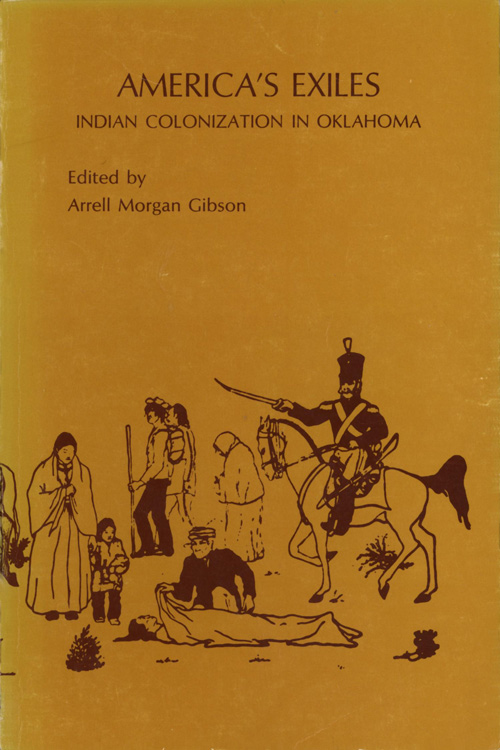 America’s Exiles: Indian Colonization in Oklahoma, Arrell Morgan Gibson, ed.
America’s Exiles: Indian Colonization in Oklahoma, Arrell Morgan Gibson, ed.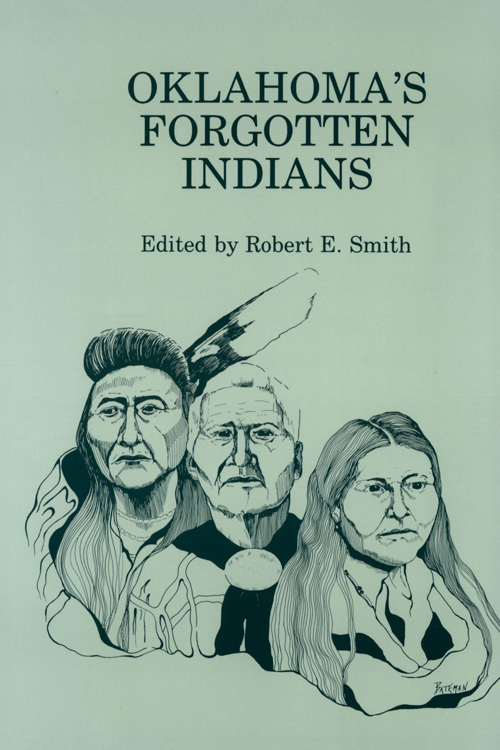 Oklahoma’s Forgotten Indians, Robert E. Smith, ed.
Oklahoma’s Forgotten Indians, Robert E. Smith, ed.

